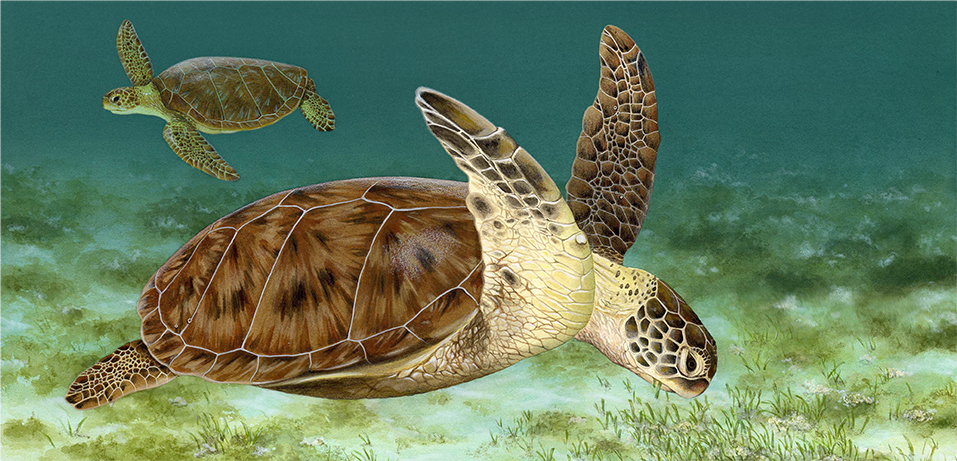
Author: Sam Trail
Date: July 17, 2023
Here at the FAU Marine Lab, we might be a little biased, but we think our shelled friends are turtle-y awesome! Specific anatomical traits that make a sea turtle a sea turtle, are quite unique and interesting.
Flippers: The arm bone is connected to the...wrist bones
Those large front feet are flippers that help a sea turtle scurry on the sand and propel it through the water. Flippers have most of the same characteristics as our own limbs. The flipper is made up of one upper arm bone (humerus), two lower arm bones (radius and ulna), wrist bones (carpals) and hand bones (our metacarpals and phalanges) – sounds familiar, right? However, the length relative ratio of each of these bones to each other is quite different than yours and mine. For example, sea turtles have extremely long finger bones that make up a large majority of their flipper skeleton, while their arm bones are comparatively short. Look at the pictures below to see the similarities and differences between the bones in a human arm and a sea turtle flipper!

Shell: Fused rib bones make for the ultimate shield
Probably the most recognizable trait of any turtle is the shell! Land turtles and tortoises usually have highly domed shells, while those of our favorite sea turtles are quite streamlined. No matter the shape, they are all made up of modified bones that you and I have, too! Our ribs provide protection for many of our essential internal organs, and so does a turtle’s, but the turtle rib cage takes protection to the next level! The bones that make up a turtle’s shell are known as “pleurals” which are expanded ribs that have fused together. These distinct modifications turn familiar bones into the ultimate shield!

Beak: No teeth…
Many turtles, like the loggerhead, have strong, powerful jaws for crushing through the exoskeletons of some of their favorite prey, such as crabs and conchs. Others, like the green sea turtle, have serrated jaws for tearing through vegetation such as seagrass to eat. Regardless of the species, all turtles have one thing in common: no teeth! Sea turtles have a tough covering of their boney jaws, much like a bird’s beak, that allow them to capture and devour their food. Like Darwin’s finches, each beak is unique, allowing species to specialize on certain food sources. Looking at the leatherback skull below, can you guess what food those small, fang-like structures on the end might help them consume?

…But one ‘tooth’
Despite not having true teeth, at one point, all turtles have a single “tooth.” Baby turtles possess an egg tooth that helps them break out of their shell! This small protrusion is an extension of the upper jaw that may be mistaken for a pointy nose. Hatchlings will lose this “tooth” after a few weeks. (However, no fairies visit them in their sleep to collect it). It literally gets stretched out flat as their face grows.
Check out our social media to find out even more about fascinating sea turtle traits, like their internal ears and sensitivity to light!